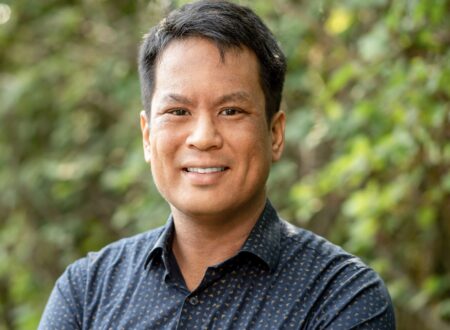by Senwung Luk and Krista Nerland
In a disappointing decision released by the Supreme Court of Canada (“SCC”) today, a majority of the Court decided that a religious belief that sacred lands should not be disturbed by human habitation was not protected by the Constitution. In our view, the SCC got it wrong. The majority has taken an impoverished view of religious freedom that excludes many Indigenous spiritual and religious belief systems.
The decision, Ktunaxa Nation v British Columbia, is about a proposal for a ski hill development in Ktunaxa traditional territory, in what is now British Columbia. The Ktunaxa people have spiritual practices relating to Qat’muk, the place where the Grizzly Bear Spirit resides. They believe that if there is permanent human habitation in Qat’muk, then the Grizzly Bear Spirit will leave, making their spiritual practices empty and meaningless. The ski hill and resort development was proposed for Qat’muk. The question for the SCC was: as the BC government is deciding on whether to permit the ski hill development, does it have a constitutional duty to take the Ktunaxa people’s spirituality into account?
A majority of the SCC judges decided that it did not. They said that the Ktunaxa people’s spiritual beliefs were simply not protected by the Charter of Rights and Freedoms. They wrote at para. 71 of their reasons, “the Charter protects the freedom to worship, but does not protect the spiritual focal point of worship.” As such, the sacredness of Qat’muk to the Ktunaxa people, and the need of the Ktunaxa people for that land to remain undisturbed by permanent human habitation, is not protected by the Charter.
It is difficult to make sense of the majority’s reasons. There is a long tradition in Canadian law that the Charter protects both sincerely held spiritual beliefs and the right to manifest those beliefs in spiritual practices. In this case, the Court says it doesn’t matter if a practice or belief loses all its significance because the land and waters on which it depends are destroyed. What the majority seems to be saying is, “as long as you can go through the motions of a spiritual ritual, it doesn’t matter if the ritual is empty of meaning to you.” We struggle to understand this logic.
Nonetheless, the majority’s reasons may leave the door open for a different result in cases where a particular spiritual practice must physically take place on a certain part of the land. In this case, the Ktunaxa’s spiritual belief depended on people staying off the land. In another case, however, where a spiritual practice takes place on the sacred land, it will be possible to argue that the Charter does protect the practice, and therefore also protects the land.
The concurring reasons of Justice Moldaver did better than the majority’s reasons. He understood that it makes no sense to say that the Ktunaxa could still participate in their spiritual practices if the spiritual site that gave those practices their meaning was destroyed. Justice Moldaver wrote:
“Unlike in Judeo-Christian faiths, for example, where the divine is considered to be supernatural, the spiritual realm in the Indigenous context is inextricably linked to the physical world. For Indigenous religions, state action that impacts land can therefore sever the connection to the divine, rendering beliefs and practices devoid of their spiritual significance. Where state action has this effect on an Indigenous religion, it interferes with a believer’s ability to act in accordance with his or her religious beliefs and practices.” [127]
Justice Moldaver rightly criticized the majority for “excluding Indigenous religious freedom claims involving land from the scope of s. 2(a) protection.” [131, 128].
The decision also has some troubling implications for the duty to consult and accommodate. We’ll produce some more detailed materials on this in the coming days, but for now, here are a few key take-homes:
- The court seems to be leaning on Indigenous people to share, as early as possible, their spiritual practices with the Crown if those practices will be affected by a proposed development. The court, unfortunately, did not mention the effects of residential schools in its reasons, and how that history might affect the ability of these beliefs to be shared with the Crown.
- The majority has a narrow view of when consent is required in a consultation process. They write, “The duty to consult and, if appropriate, accommodate Aboriginal interests may require the alteration of a proposed development. However, it does not give Aboriginal groups a veto over developments pending proof of their claims. Consent is required only for proven claims, and even then only in certain cases. What is required is a balancing of interests, a process of give and take” [80]. This falls well short of the ideals of free, prior and informed consent set out in the United Nations Declaration on the Rights of Indigenous Peoples.
- The majority reasons suggest that it is acceptable for the government to stop consultation if it appears “fruitless” [110]. In this case, “fruitless” consultation meant consultation after the Ktunaxa had told the Minister the ski development could not be consistent with their spiritual practices.
In summary, this decision is a disappointing artifact of Canadian colonialism which turns away from the attitude of reconciliation that seems to have animated the Court’s recent decisions on Crown-Indigenous relations. We agree with Justice Moldaver that the majority’s decision risks putting Indigenous spirituality in a lower position than settler religion when it comes to constitutional protection. The Court ignored the clear provisions in the United Nations Declaration on the Rights of Indigenous Peoples that stressed the importance of protecting Indigenous spiritual practices, and of equal protection for the rights of Indigenous peoples. At a time when Canadians are looking to the SCC for principled decision-making that improves Indigenous-settler relations, this decision represents a setback that is likely to lead to more conflict and litigation.
On a personal note, OKT was retained by Shibogama First Nations Council to make arguments before the Supreme Court as interveners. Although we are disappointed with the Court’s result, we are proud of having represented Shibogama’s viewpoint. This blog does not necessarily represent the views of Shibogama, and reflects the authors’ personal views.
Related Posts

Consultation at the High End of the Spectrum: A Primer
What kind of cases require deep consultation?
The extent of consultation and accommodation required in a given case depends on the strength of the claim to an Aboriginal right, treaty…
Read More...
Respect and Responsibility: Integrating Indigenous Rights and Private Land Conservation in Canada
This post contains the executive summary of a new report, Respect and Responsibility: Integrating Indigenous Rights and Private Conservation in Canada.
To download the full report, please click here.
To…
Read More...
Court of Appeal for the Northwest Territories Confirms Sahtú Communities Can Manage the Harvesting of Wildlife in Their Territory
Monday, January 20, 2025
The Court of Appeal for the Northwest Territories (the “Court of Appeal”) recently released a decision that confirms that communities in the Sahtú…
Read More...


